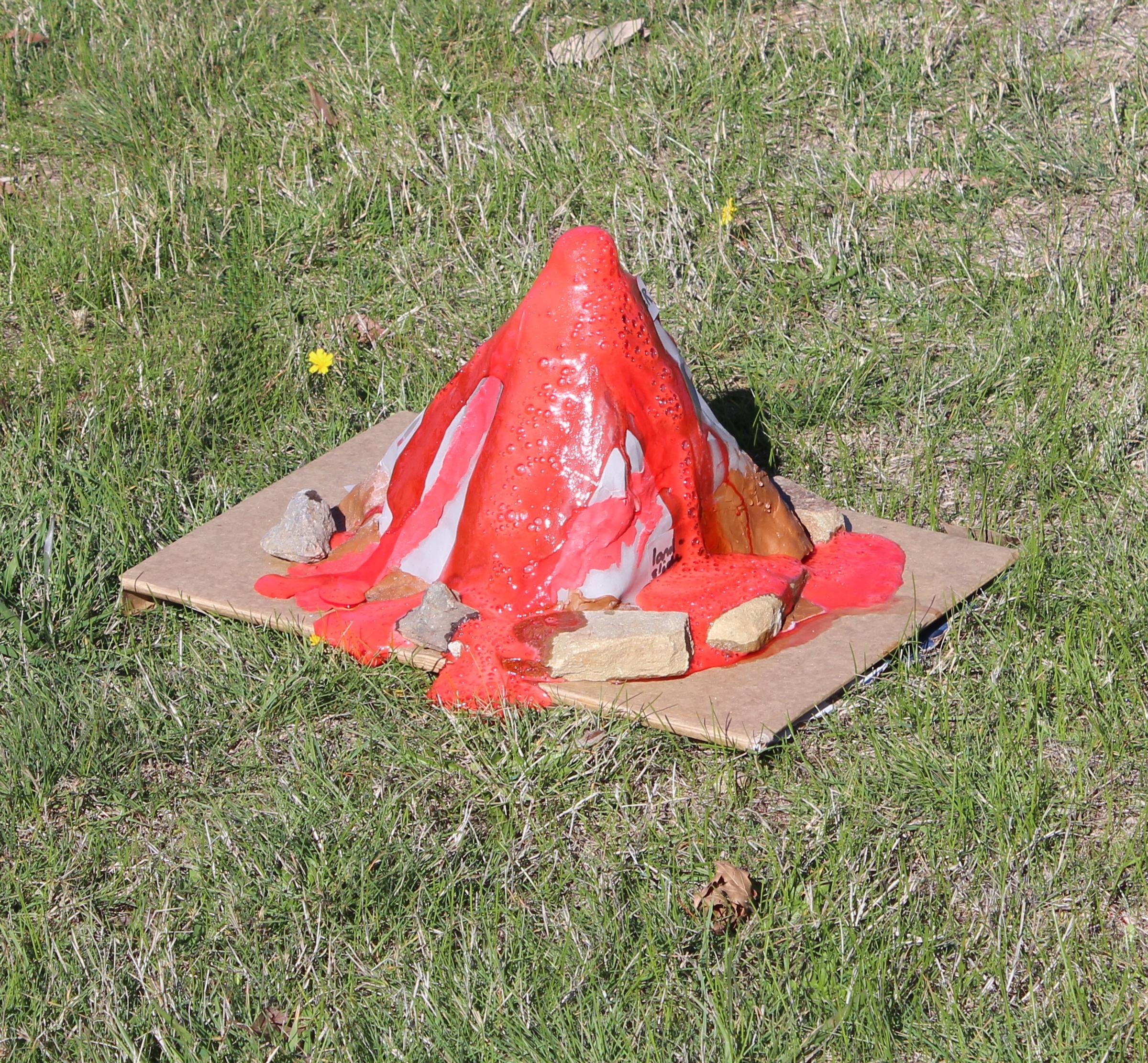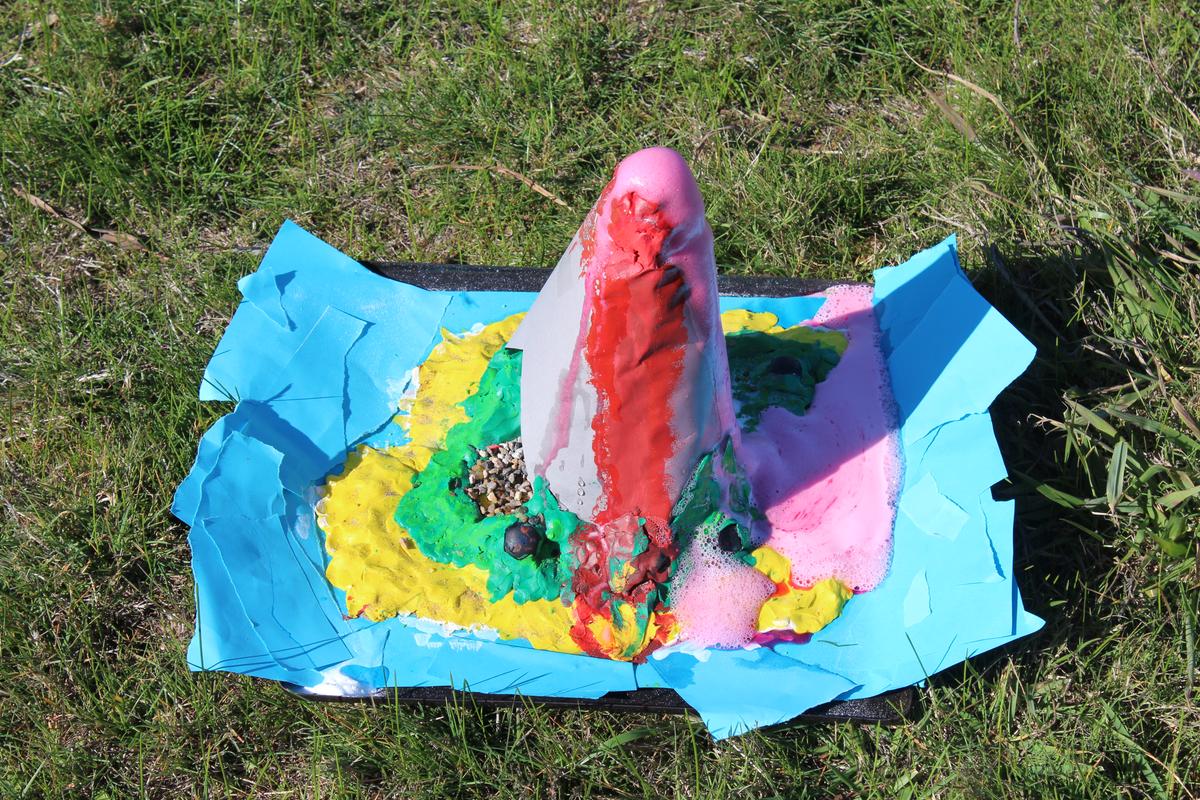Lava Flows

For the first lessons of the 9/10 Geography classes, we decided that the most innovative way to represent the inner workings of a volcanic eruption was to demonstrate it as a 3D model. Our goal was to combine chemicals to create an eruption-like effect, be it through Coke and Mentos, or baking soda and vinegar. Before the experiment, it was a requirement to learn the different terms involved in the processes of a volcano, and so class time was assigned to this task. The terms included crater, the mouth of the volcano surrounding the main vent, and main vent, which is the main passageway the magma flows through.
After said tasks, we learned about what causes the formation of volcanoes, being the theory of plate tectonics. We studied what caused them to be so destructive, and constructive, and what had occurred with plate boundaries that had formed these goliaths of magma and stone.
We also learned about why these volcanoes erupt, and what parts and processes give way to the disasters that amaze and plague our society.
Nate, Kaiden and I completed our volcano, post three periods of building and then awaited eruption day. We decided as a group that the school oval would be the site of the experiment. When it was our turn to erupt our volcano, we began to add the chemicals. These included: baking soda, liquid dish soap and water in one cup, while in another, vinegar and red food dye. The baking soda combination was first poured into the volcano. When ready, the vinegar combination was then added, causing the eruption. Red soapy foam poured out of the crater and down the sides of the volcano. Ours was done and we were then able to watch four other volcanoes erupt. Some, alas, were better than ours.
After the experiment, we returned to our classroom. Using resources such as Google Earth, we researched the current states of volcanoes, and what they’re used for today. The information we found included hiking, marathons, farmland and attractions.
-Tucker Stewart, Year 10












